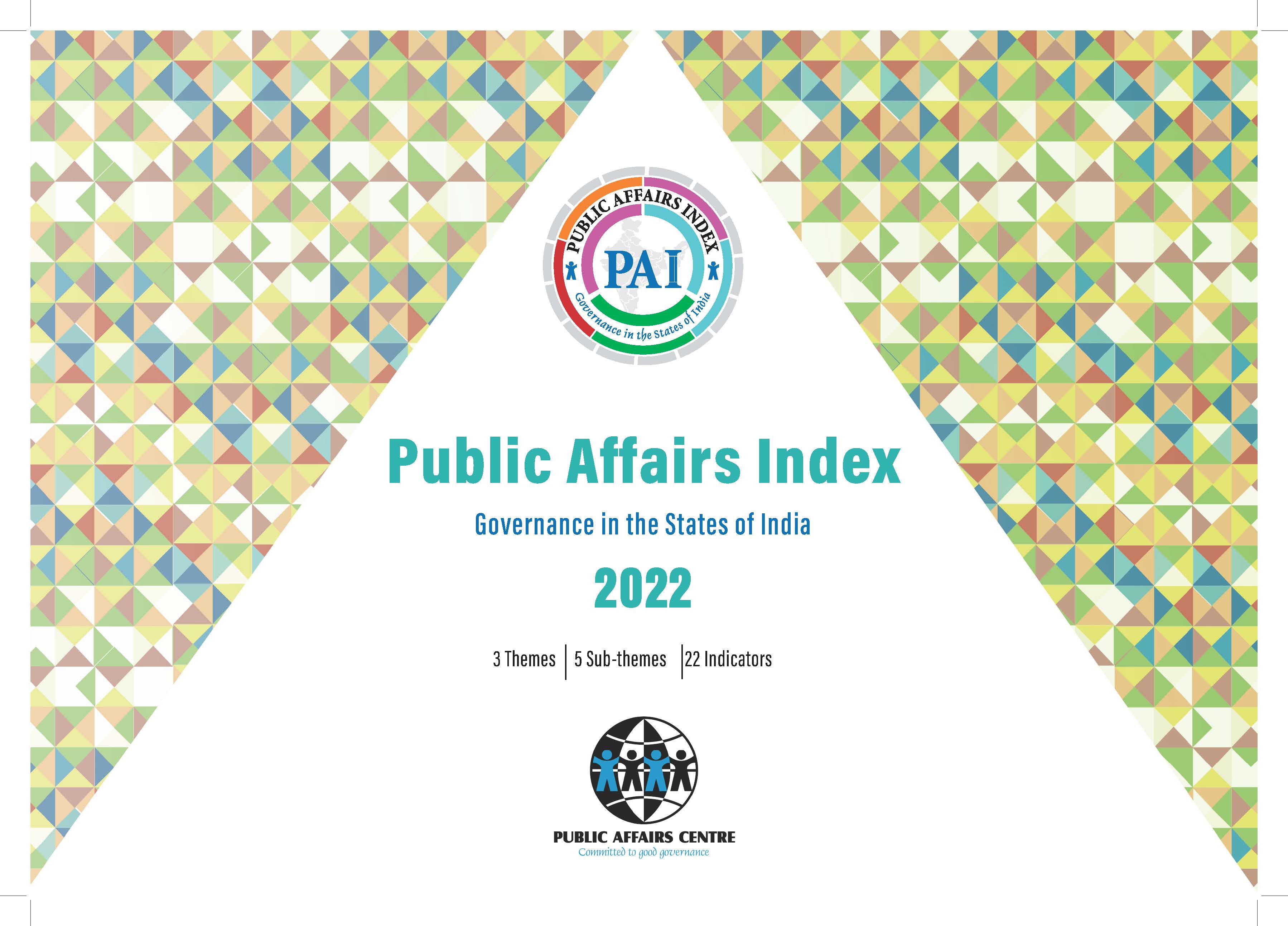
Public Affairs Index
The Public Affairs Index (PAI) is a scientifically rigorous, data-based framework that measures the quality of governance at the subnational level and ranks the states and Union Territories (UTs) of India on a Composite Index (CI). States are classified into two categories- large and small- using population as the criteria.

Public Affairs Index (PAI) 2022 (7th edition)
Recognising the central role of States in India as platforms of development action, the emphasis of Public Affairs Index 2022 (PAI 2022) is to evaluate governance in the sub-national units in India. In assessing governance, the Constitutionally rooted conception of Justice was operation lised through three Themes, five Sub-themes and 22 indicators; that quantitatively measure Social, Economic and Political Justice in f India.
PAI 2022 is a conscious effort to present a scientifically sound and methodologically rigorous data-based framework to measure the quality of governance in the states of India and rank them.
Videos: Full event | Opening Remarks | Address | Chief Guest | Presentation
Download the Summary Report HERE
Download the Press Release HERE
Full Report
PAI (Public Affairs Indexs) FAQ
1. What is Public Affairs Index (PAI 2022)?
Recognising the central role of States in India as platforms of development action, the Public Affairs Index 2022 (PAI 2022) is an effort to quantitatively evaluate governance in the States of India.
2. What is new in PAI 2022?
PAI 2022 underwent a paradigmatic shift in its approach on multiple fronts. PAI 2022 undertakes a methodological shift from Principal Component Analysis (PCA) adopted in PAI 2021 to a Multi Criteria Decision Making (MCDM) based approach. The framework of analysis in the PAI 2022 also underwent a transition from the Sustainable Development Goals (SDGs) based model to a Constitutionally enshrined conception of Justice – Social, Economic and Political.
3. What is the analytical framework adopted in PAI 2022?
In assessing governance in the States of India, the Constitutionally rooted conception of Justice was structured through three Themes, five Sub-themes and 22 indicators that would quantitatively measure Social, Economic and Political Justice in the States of India.
4. What additional analysis acts as a Unique Selling Point (USP) for PAI 2022?
As an addendum to the quantitative exercise, PAI 2022 launches a qualitative enquiry into the citizen-centricity of States, its policies and politics. Policy objects mapped to the Constitution of India were placed in a Narrative Policy Framework. The social construction of policies was abstracted through a mining and processing of messages-colloquially called ‘tweets’- on the microblogging social platform, Twitter. Interpretations of the dominant narratives are compiled in the Chapter titled ‘Narratives of Justice’.
5. How are the States of India bifurcated for PAI 2022?
Accounting for variation in States of India, an elbow method was used to categorise States based on log of population size of these States. They were bifurcated into 18 Large and 10 Small States. PAI 2022 exempts analysis of Union Territories due to difficulty in accessing reliable data and irrelevance of a certain Constitutionally mandated functions.
6. Which are the 18 Large States analysed in PAI 2022?
Andhra Pradesh, Assam, Bihar, Chhattisgarh, Gujarat, Haryana, Jharkhand, Karnataka, Kerala, Madhya Pradesh, Maharashtra, Odisha, Punjab, Rajasthan, Tamil Nadu, Telangana, Uttar Pradesh and West Bengal.
7. Which are the 10 Small States analysed in PAI 2022?
Arunachal Pradesh, Goa, Himachal Pradesh, Manipur, Meghalaya, Mizoram, Nagaland, Sikkim, Tripura and Uttarakhand.
For further information, kindly send an email to pec@pacindia.org
